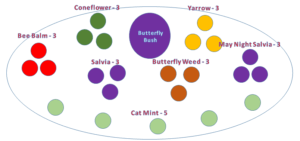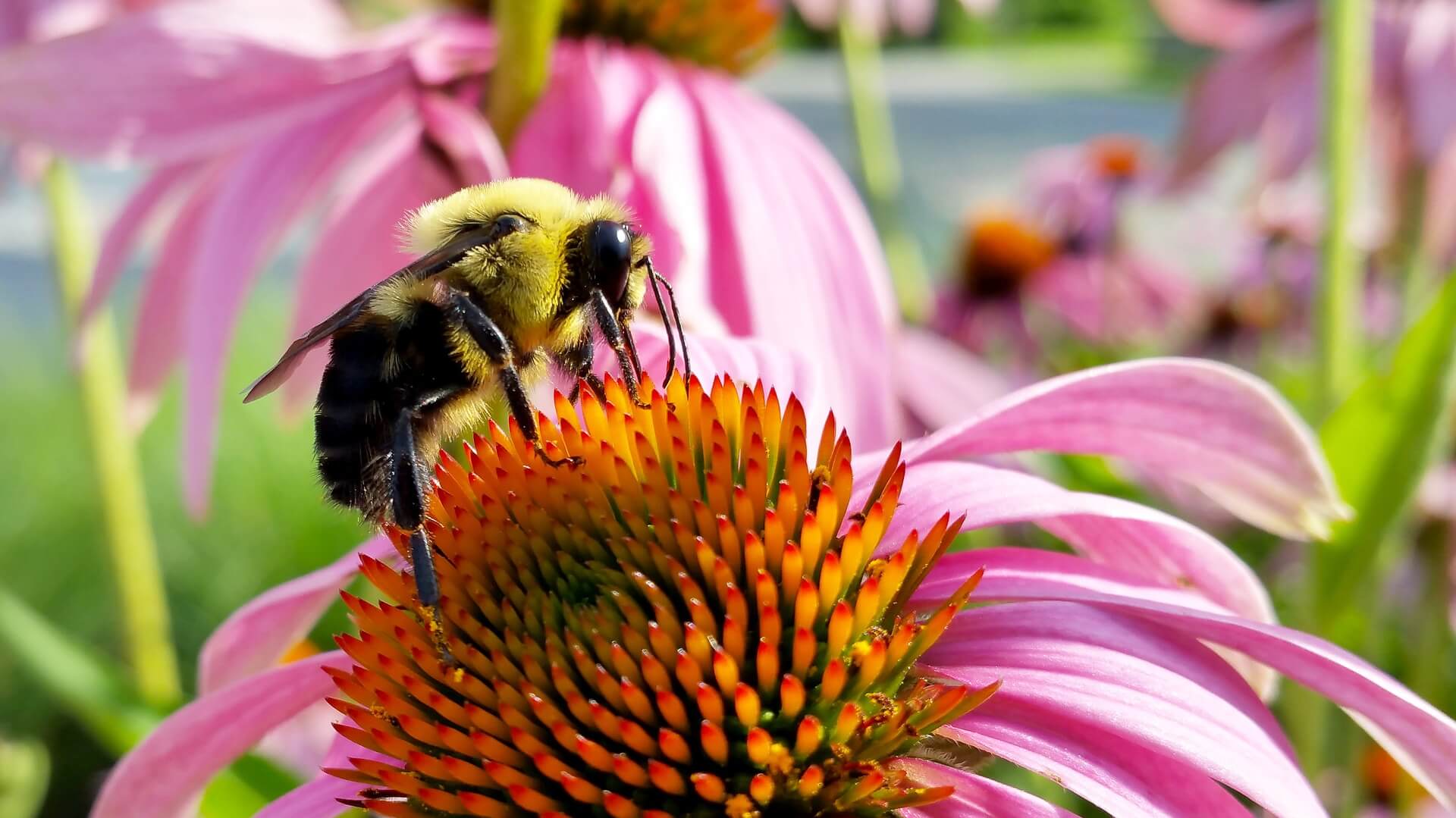Creating A Pollinator Garden
Pollinators
Bees, Butterflies, Wasps, Moths and more are vitally important to our ecosystem and food supply. We do know that nectar and pollen sources provided by more flowering plants will help improve their health and numbers. The National Pollinator Garden Network Million Pollinator Garden Challenge website implores people to plant gardens which “use plants that provide nectar and pollen sources, provide a water source, be situated in sunny areas with wind breaks, create a large “pollinator target” (mass of one type plant), establish continuous bloom throughout the growing season and eliminate or minimize the impact of pesticides”.
Bees collect pollen as their main source of protein for brood production and development of young bees. The protein content of pollen is the most studied component of pollen and is so important in bee survival rates. Bees also collect nectar from flowers. They convert this into honey and is the primary source of carbohydrates, which provides energy for daily activities. Beekeepers should be familiar with both nectar and pollen producing plants in their area and garden to ensure good nutrition for their colony.
Adult butterflies enjoy the same nectar bearing flowers as the bees. Their life spans vary greatly, with some species living only 2-3 weeks while others can live 10 months. They lay their tiny white eggs on the underside of a leaf of their favorite host plant. The eggs hatch in a week, become voracious eating caterpillars for three weeks and then form a chrysalis. After several weeks (for most species), a butterfly will emerge. If you are trying to attract certain type of butterfly, find out its preferred host plant. The adult will lay eggs on those for her brood to feed on. Monarchs like the milkweed family, so plant some butterfly weed in the garden.
Design Tips
You can easily create a garden for helping pollinators, as well as bringing more nature your back door. The greater the plant diversity, the more you will attract and support our Bees (both honey and wild) and our Butterflies (in particular, the Monarchs need our help). Here is a list of a few favorite pollinator plants that are good sources of both pollen and nectar.
Perennial plants include:
- Aster
- Agastache
- Bee Balm
- Black-eyed Susan
- Catmint
- Coneflower
- Lavender
- Milkweed
- Mints
- Penstemon
- Rosemary
- Salvia
- Yarrow
Annual plants include:
- Borage
- Coriander/ Cilantro
- Lemon Balm
- Marigolds
- Sunflower
- Zinnias
It is best to plant to make it easier for the bees and butterflies to see them. Blue and red flowers are easiest for them to see. The old “rule” of planting in groups of threes and fives certainly applies here, but I would double that if spaces allows. Choose at least 3-5 different types of flowering plants and mass in groups. A simple yet effective design might be: 5 cat mint in the front row in a staggered arrangement, the 2nd row, left to right, would have 3 Bee Balm, 3 Salvia, 3 Butterfly Weed, 3 May Night Salvia. The back row could consist of 3 Cone Flower, a Butterfly Bush and 3 Yarrow.

Bees and butterflies also need a good water source and some shelter from the wind as they feed. Water is easy to supply using shallow clay saucer with pea gravel or sand in the bottom. Keep it moist. Windbreaks made of shrub borders or wooden fence will allow the delicate creatures to flit from flower to flower with ease.
Pesticides
It’s important not to use pesticides in your garden. You don’t want to attract them into a death trap, so break the habit of spraying every bug you see. Hand pick Japanese beetles, use soap spray early in the morning before bees (and butterflies) get up. The plants you have planted for the bees also attract beneficial insects such as lacewings, parasitic wasps and ladybugs. Let the beneficial insects fight off bad bugs such as aphids.
Most everyone is enchanted with the butterflies and bees as they flutter and buzz across the landscape. However, we may not realize that we often harm them at some point during their life cycle. Once we are aware of what to look for and how to encourage all phases of their life cycle, we will be rewarded with their presence in our gardens. We will gain the satisfaction of knowing we helped fuel our bees by growing the best flowering plants. Creating a sanctuary for our pollinators not only brings us enjoyment but helps our environment and the production of food crops that feed the world. Please visit us at Willow Ridge Garden center, 97 Oak Ridge Turnpike in Oak Ridge, for individual help creating your new pollinator garden.

